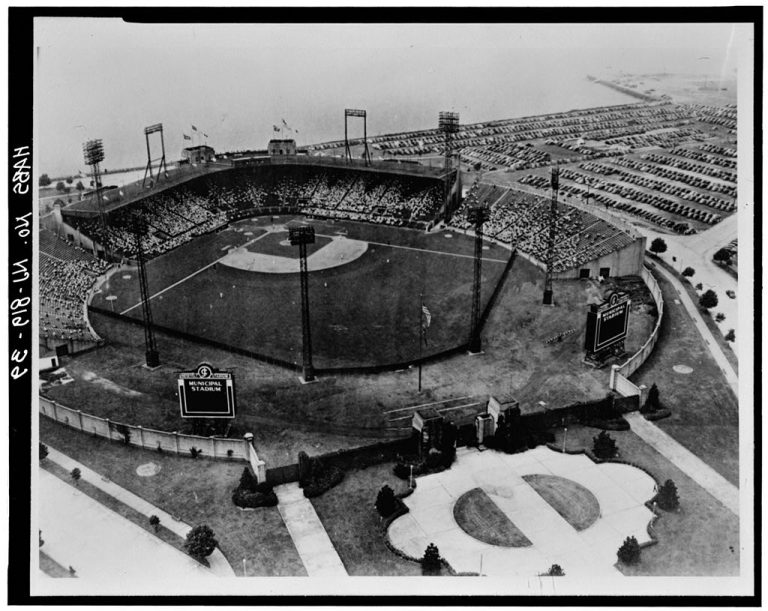Jersey City Sports History: The History of Roosevelt Stadium
Named after President Franklin D. Roosevelt, Jersey City’s Historic Roosevelt Stadium is best known as the stadium in which the legendary Jackie Robinson, debuted in his baseball career as the first African-American to play major league baseball. Opening day on April 22, 1937, was just one of the thousands of games, concerts, graduations, and performances that would be held at this legendary Jersey City sports center for more than forty years.
Once located on nineteen acres at Droyers Point in Jersey City’s Westside neighborhood, the Roosevelt Stadium project was originally started as a means of bringing construction jobs to the city’s unemployed during the Depression. The project was funded under the Federal Works Progress Administration for $1.5 million and employed 2,400 local workers.
The 24,000-seat recreational facility was considered “the paradigm of elegance” by Frank Borsky of The New York Times and was touted as Mayor Frank Hague’s most astounding accomplishment during his service to the community between 1917 and 1947.
Considered to be an architectural marvel well before its time, the sports stadium, true to its original design, was constructed of concrete and steel and locally mined marble from nearby Pennsylvania. Its unique bowl-shape, terra cotta façade, and terrazzo flooring attracted visitors from New York City, Staten Island, and areas of Northern New Jersey for more than just the minor league baseball games it hosted.
Although Roosevelt Stadium had been the home to countless events and venues, on , April 18, 1946, baseball history was made when a public announcer announced over the radio, for the country to hear: ''At second base for the Montreal Royals, Jackie Robinson.'' A then 27-year-old African-American baseball player stepped out into the field crossing the “color” line for the first time and introducing the world to a new era of baseball. The controversial event drew a crowd of 52,000 spectators, more than double the stadium’s capacity.
By the 1950s, attendance of sporting events at Jersey City’s Roosevelt Stadium began to wane and the owners decided to extend opportunities for use outside of baseball alone. Professional wrestling events, drum and bugle corps competitions, heavyweight and welterweight boxing matches, rock concerts, meetings, and football games began to be held in the facility. An ice-skating rink was even installed but became too costly a venture and was quickly shut down.
After more than 35 years of use, the stadium and its grandeur began to see signs of wear and tear. The facility which was originally the savior to many workers in Jersey City during the Depression was now a liability to the city. The much-needed repairs included resodding of the playing field, an overhaul of many of the vital systems including drainage and heat, and removal of asbestos located throughout the decaying building.
On April 17, 1996, the Hovnanian Corporation, the builders of the Society Hill at Droyers Point housing development, installed a plaque on the site of the former Roosevelt Stadium as Society Hill to commemorate the fiftieth anniversary of the opening game after the World War and Robinson’s extraordinary entry into baseball.
The Roosevelt Stadium will forever be emblazoned into the fabric of Jersey City for its art deco design, its contribution as a source of financial prosperity for residents of the city, and of course, as the site of so many historic events that placed the city on the map.
"A life is not important except for the impact it has on other lives.”
-Jackie Robinson















The New Jersey Room at the Jersey City Public Library is a treasure-trove of historic and current information on New Jersey, Hudson County and Jersey City.